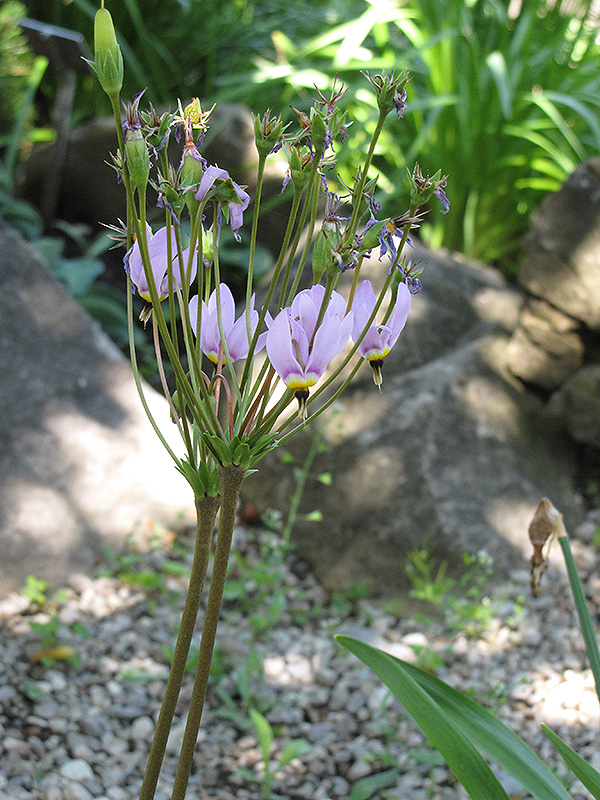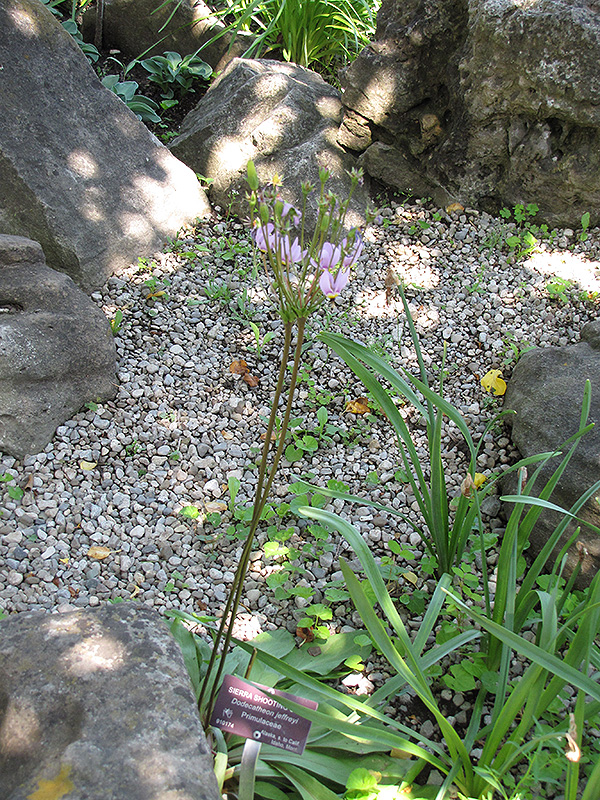Plant Finder
* This is a "special order" plant - contact store for details
Plant Height: 4 inches
Flower Height: 12 inches
Spread: 6 inches
Sunlight:
![]()
![]()
![]()
Hardiness Zone: 4a
Description:
Simply gorgeous bright lavender flowers with a purple ring at the base; lush green leaves and red-infused stems add contrast; likes moisure in the spring and dryness in the summer when it is dormant
Ornamental Features
Sierra Shooting Star features dainty nodding lilac purple recurved flowers with yellow eyes and a purple ring at the ends of the stems in mid spring. Its pointy leaves remain green in color throughout the season.
Landscape Attributes
Sierra Shooting Star is an herbaceous perennial with tall flower stalks held atop a low mound of foliage. Its medium texture blends into the garden, but can always be balanced by a couple of finer or coarser plants for an effective composition.
This is a relatively low maintenance plant, and is best cleaned up in early spring before it resumes active growth for the season. Deer don't particularly care for this plant and will usually leave it alone in favor of tastier treats. It has no significant negative characteristics.
Sierra Shooting Star is recommended for the following landscape applications;
- Mass Planting
- Rock/Alpine Gardens
- Border Edging
- General Garden Use
Planting & Growing
Sierra Shooting Star will grow to be only 4 inches tall at maturity extending to 12 inches tall with the flowers, with a spread of 6 inches. It grows at a slow rate, and under ideal conditions can be expected to live for approximately 10 years. As an herbaceous perennial, this plant will usually die back to the crown each winter, and will regrow from the base each spring. Be careful not to disturb the crown in late winter when it may not be readily seen! As this plant tends to go dormant in summer, it is best interplanted with late-season bloomers to hide the dying foliage.
This plant performs well in both full sun and full shade. It requires an evenly moist well-drained soil for optimal growth. It is not particular as to soil pH, but grows best in rich soils. It is quite intolerant of urban pollution, therefore inner city or urban streetside plantings are best avoided. This species is native to parts of North America.
* This is a "special order" plant - contact store for details

